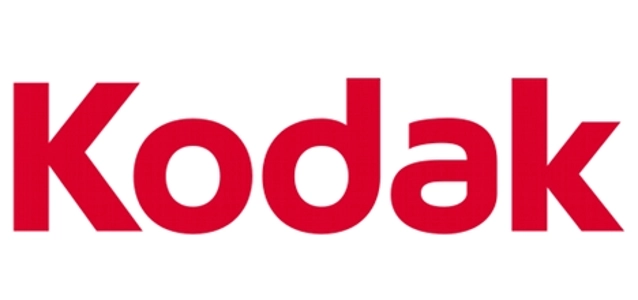
© Wikipedia
Business |
Kodak fell behind
Once an industry leader, Eastman Kodak has been caught offside. Japanese competitors have been faster adapting to changing times. Why did Kodak fail?
Eastman Kodak – veteran of the photo industry – obviously missed the signs of change. The company applied for bankruptcy protection under Chapter 11 in January this year.
The industry cards were dealt anew: Canon and Nikon snatched the top spots, Sony, Panasonic and Samsung established themselves as manufacturers for the masses. Market shares shifted and Kodak is no longer allowed to play.
With Kodak, America has seen one of its major brands struggle for survival. A radical computerization and digitization of the entire industry are the obvious reasons; as well as some, in hindsight, unwise business choices. The irony of it all: Kodak initiated this development, but missed the chance to follow through on it. The company couldn't keep up with its Asian competitors.
In 2005, Kodak started – full force – on the development of its printer business and had to compete with heavy weights such as Hewlett-Packard, Canon, Samsung, Kyocera and Brother. Today - six years later - Sony, Canon, Nikon, Zeiss, Samsung and HP moved ahead while Kodak files for Chapter 11. Kodak pioneered the research and development of digital photography in the seventies, but the company let Japanese companies go ahead with its introduction into mass markets. A mistake as it turns out. Kodak could not catch up. The company – founded 1881 by Henry Strong – seems to follow the fate of other brands that 'once were'. Short Timeline - January 1, 1881: Eastman and businessman Henry A. Strong formed a partnership called the Eastman Dry Plate Company. - 1884: The Eastman-Strong partnership was dissolved and the Eastman Dry Plate and Film Company formed with 14 shareowners. The Eastman Dry Plate Company was responsible for the first cameras suitable for non expert use. - 1885: George Eastman invented roll film, the basis for the invention of motion picture film, as used by early filmmakers and Thomas Edison. - September 4, 1888: Eastman registered the trademark Kodak - 1888: The first model of the Kodak camera appeared. - 1889: The Eastman Company was formed. - 1891: George Eastman began to produce a second line of cameras, the Ordinary range. - 1892: It was renamed the Eastman Kodak Company. - Early 1890s: The first folding Kodak cameras were introduced. - 1895: The first pocket Kodak camera, the USD 5 Pocket Kodak, was introduced. - 1897: The first folding pocket Kodak camera was introduced.George Eastman
- 1900: The Brownie camera was introduced, creating a new mass market for photography. - 1901: The present company, Eastman Kodak Company of New Jersey, was formed under the laws of that state. - 1935: Kodak introduced Kodachrome, a color reversal stock for movie and slide film. - 1963: Kodak introduced the Instamatic camera. - 1975: Steven Sasson, then an electrical engineer at Kodak, invented the digital camera. - 1982: Kodak launches the Kodak Disc film format for consumer cameras. Ultimately the format proves unpopular and was later discontinued. - 1986: Kodak scientists created the world's first megapixel sensor, capable of recording 1.4 million pixels and producing a photo-quality 12.5 x 17.5 cm (5×7 inch) print. - 1987: Dr. Ching W. Tang, a senior research associate, and his colleague, Steven Van Slyke, developed the first multi-layer OLEDs at the Kodak Research Laboratories, for which he later became a Fellow of the Society for Information Display (SID) - 2003: Kodak introduced the Kodak EasyShare LS633 Digital Camera and the Kodak EasyShare Printer Dock 6000. - November 2003: Kodak acquired the Israel-based company Algotec Systems. - January 2004: Kodak announced that it would stop selling traditional film cameras in Europe and North America, and cut up to 15'000 jobs - January 2005: The Kodak EasyShare-One Digital Camera. - January 2005: Kodak acquired the Israel-based company OREX Computed Radiography. - January 2006: Kodak unveiled the Kodak EasyShare V570 Dual Lens Digital Camera. - April 2006: Kodak introduced the Kodak EasyShare V610 Dual Lens Digital Camera. - August 1, 2006: Kodak agreed to divest its digital camera manufacturing operations to Flextronics. - January 10, 2007: Kodak agreed to sell Kodak Health Group to Onex Corporation. - April 19, 2007: Kodak announced an agreement to sell its light management films business to Rohm and Haas. - May 25, 2007: Kodak announced a cross-licensing agreement with Chi Mei Optoelectronics and its affiliate Chi Mei EL - November 2008: Kodak released the Kodak Theatre HD Player. - January 2009: Kodak posted a $137 million fourth-quarter loss and announced plans to cut up to 4,500 jobs. - June 22, 2009: Kodak announced that it would cease selling Kodachrome color film by the end of 2009. - December 4, 2009: Kodak sold its Organic light-emitting diode (OLED) business unit to LG Electronics. - January 2012: Kodak received a warning from the New York Stock Exchange (NYSE). - January 19, 2012: Kodak filed for Chapter 11 Bankruptcy Protection. ----- Timeline & image source is © Wikipedia.

